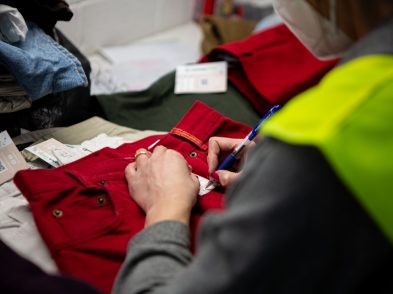Coleran has a job
most of us don’t know exists: designing fake computer systems for sci-fi and
action films, systems that discreetly make them seem fast and cool. His
extensive portfolio of Fantasy User Interfaces includes The Bourne Identity, Mission
Impossible 3 and The Island.
You’ve told
National Public Radio that video games provide a large inspiration for your
designs. What is the role of the past in the future of interface design?
Nothing we do
exists in isolation. There is nothing new, just extensions and adaptations of
familiar things. As designers, we carry the sum of our experiences, including
the games we play, the books we read, into our work. One interesting field in
which the past exerts a curious hold is the creation of icons: an old TV with
an aerial to represent a large LCD, a strip of 35mm film to represent video,
and floppy disks as icons for ‘save.’ Many young adults have probably never
even seen those things.
Fiction and
reality often parallel each other eventually, but can you give us an example of
something in a film that is currently and potentially impossible?
This is a
difficult question! To be honest, I have seen little over the years that has
not come to pass in one form or another. Many things crafted for film are based
on existing projects in the experimental or development phase; departing from
these, we skip years of development by faking an attractive end result that
looks like it works. Twenty years ago, it was different: the devices in
films like Bladerunner and 2001 were technologically impossible at the time. But video phones were
previously science fiction and are now available with technologies like
Facetime and Skype. The gap between idea and realization seems to be
disappearing thanks to the ingenuously designed devices we now have, and that
influences what appears in film.
Your work tells a
story quickly through images. Most of us don’t design for film, but we need to
communicate visually on a daily basis. Based on your experience, what advice
can you give to someone designing a Powerpoint presentation?
Whether it’s a
movie or Powerpoint presentation, you are still trying to communicate a message
to an audience. The thread that runs through all good design is storytelling.
People respond very well to stories-without them, you just have facts and
nothing to give an audience good reason to care. A story is the hook and the
glue that makes people care about the message you wish to communicate, both verbally
and visually. Keep it simple.
Have you been to
Florence or Italy before? What are you most looking forward to about your
upcoming trip?
I have been to
Rome and Caserta, but not to Florence. I feel a lot of enthusiasm for Italy; I
love the place. I am looking forward to connecting with some of the great
people and thinkers who make up this community.







